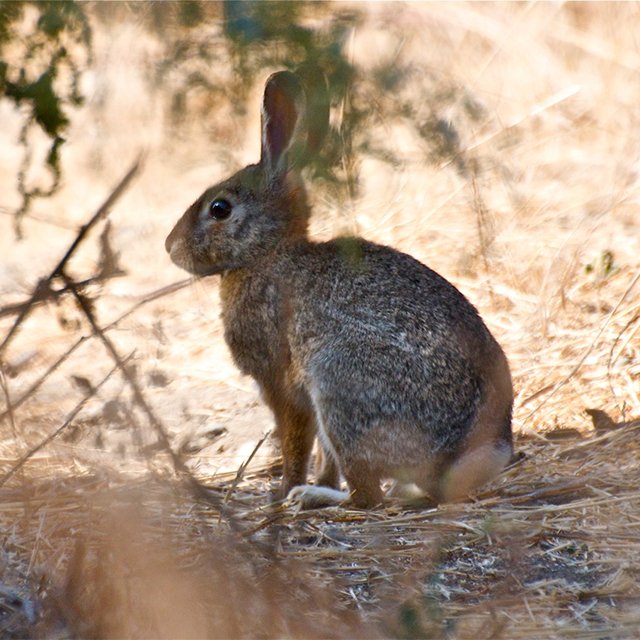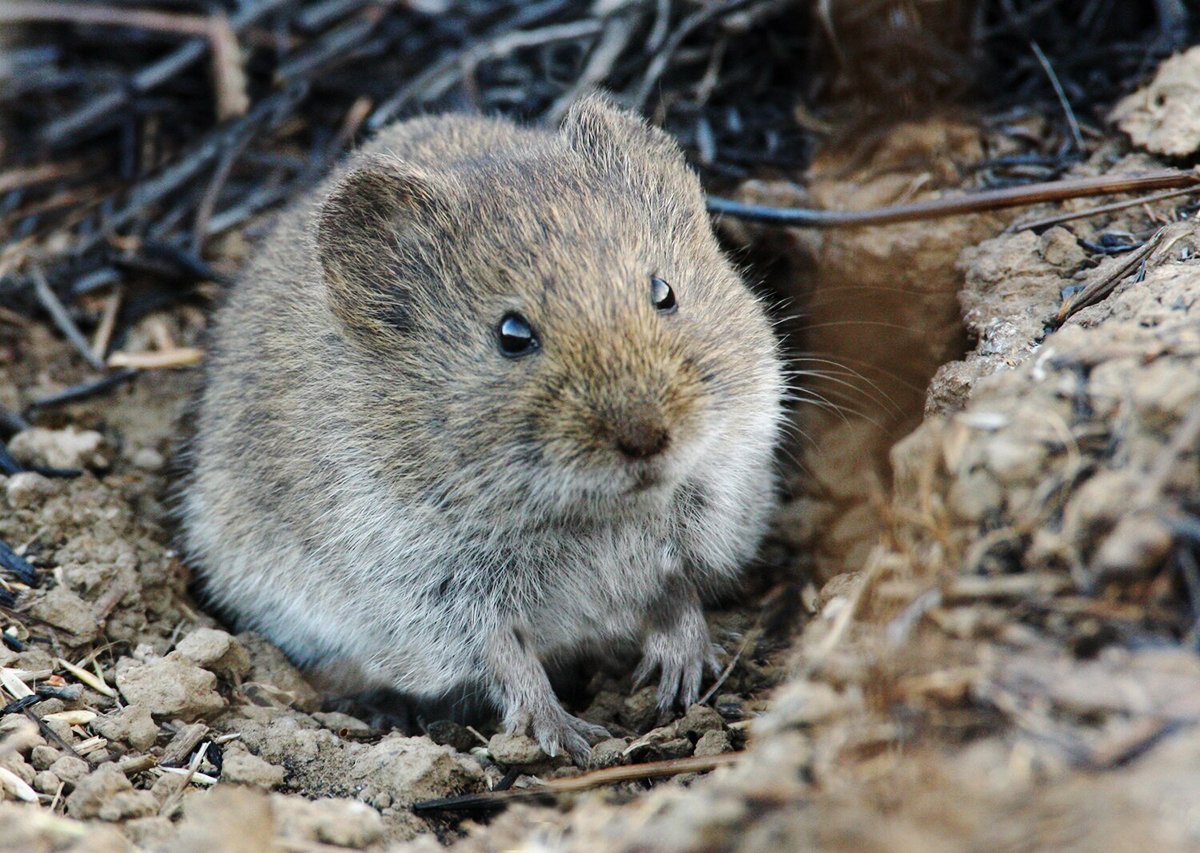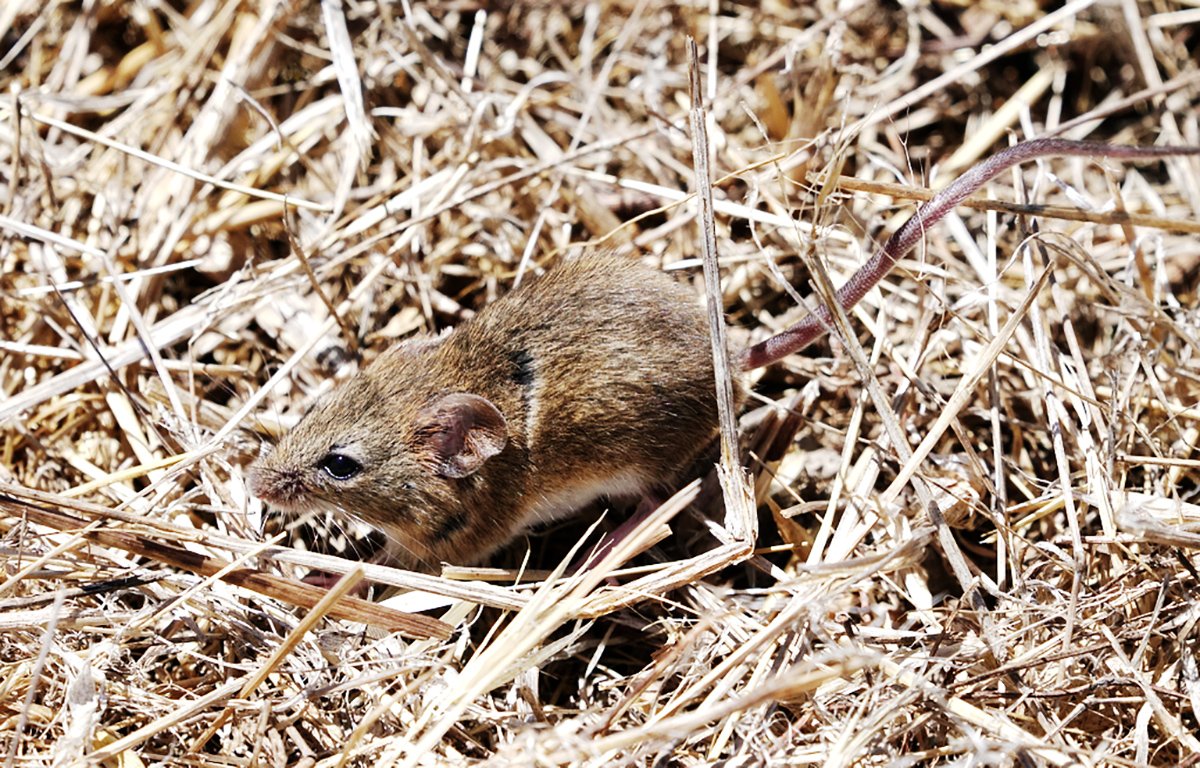MAMMALS
CALIFORNIA GROUND SQUIRREL (Otospermophilus beecheyi)
Fun Fact: The California ground squirrel has large cheek pouches to maximize the amount of food they can store.
Diet: Seeds, roots, insects, nuts, and fruit.
Habitat: Meadows, plains, and urban areas.
Overview: The California ground squirrel is commonly found in northern California and Washington. They have a mix of brown, tan, and gray fur that make them good at blending into their surroundings. They can be found digging in the ground, hence the name and make underground habitats for many other animals to live in.
Resources:
Nature Mapping Foundation
http://naturemappingfoundation.org/natmap/facts/california_ground_squirrel_712.html
EASTERN FOX SQUIRREL (Sciurus niger)
Fun Fact: The Eastern Fox Squirrel will remain motionless for periods of time if they think a predator is around.
Diet: Eat acorns, nuts, fruits, and seeds.
Habitat: Prefers open forests, forest edges, orchard-vineyard, riparian, and urban areas
Overview: The Eastern Fox Squirrel more recently has introduced itself to Los Angeles and Ventura County, and can be seen at Ballona Wetlands at any time of the day, however during the winter they come out less frequently. They depend on getting their water from plants so the recent drought has been a huge threat to their livelihood.
Resources:
California Department of Fish and Wildlife
COYOTE (Canis latrans)
Fun Fact: Coyotes are a member of the dog family.
Diet: Small mammals
Habitat: Forest edges, plains, hillsides, and urban edges.
Overview: Coyotes are present throughout most of North and Central America, and can be found across California. They are nocturnal predators so are harder to spot during the day, and are usually found by themselves.
Resources:
Nature Mapping Foundation
http://naturemappingfoundation.org/natmap/ca/facts/mammals/coyote.html
DESERT COTTONTAIL (Sylvilagus audubonii)
Fun Fact: The Desert cottontail runs in a zig-zag pattern to get away from predators.
Diet: Fruits, nuts, and grass.
Habitat: Deserts, woodlands, and grasslands.
Overview: The Desert cottontail resides throughout much of southwest America, and can be found across California. They like hot and dry areas, and can be spotted by their long tall ears that stick straight up.
Resources:
ADW
POCKET GOPHER (Thomomys bottae)
Fun Fact: Pocket gophers are very beneficial components of ecosystems. They move enormous amounts of soil every year, and therefore help to aerate the soil.
Diet: Eat mainly roots, tubers, and above ground plants.
Habitat: Areas with loose, sandy soil with edible plant cover.
Overview: The small rodents are named for their fur-lined pouch-like cheeks, which allows them to store food so that they can burrow deep into the soil and stay down there. Pocket gophers are solitary animals that mainly only come up in the spring and summer to breed, so are rare to see at the Wetlands.
Resources:
National Wildlife Federation
https://www.nwf.org/Educational-Resources/Wildlife-Guide/Mammals/Pocket-Gophers
Photo Credit: Ojai Valley Land Conservancy
RACCOON (Procyon lotor)
Raccoon tracks
Fun Fact: A raccoon’s paw is very similar in function to a human hand, and makes them very dexterous.
Diet: Fruits, vegetables, insects, small rodents, fish, and even bird eggs.
Habitat: Urban areas, farmlands, woodlands, and suburban areas.
Overview: Raccoons are found all across the United States, Canada, and some parts of South America. They are known for their dark black fur around their eyes that gives the appearance of a mask. They can be spotted in California digging through trash or hiding up in the woodlands.
Resources:
California Nature Mapping Foundation
http://naturemappingfoundation.org/natmap/ca/facts/mammals/raccoon.html
SOUTHERN CALIFORNIA SALT MARSH SHREW (Sorex ornatus salicornicus)
Fun Fact: The Southern California salt marsh shrew has a bicolored tail.
Diet: Amphipods, insects, and small invertebrates.
Habitat: Salt marshes, wetlands, and coastal areas.
Overview: The Southern California salt marsh shrew is resident to the marshes across California’s coast, and can be spotted in the Ballona wetlands. They unfortunately have been largely impacted by the construction and dredging of the wetlands across California.
Resources:
NRM
SOUTH COAST MARSH VOLE (Microtus californicus stephensi)
Fun Fact: The South Coast marsh vole use their urine to communicate to others during the nighttime in the tunnels.
Diet: Grass, roots, and plants.
Habitat: Chaparral, woodlands, grasslands, and marshes.
Overview: The South Coast marsh vole is a common resident to Southern California, but are sometimes hard to see since they spend most of their life under the ground burrowing. They have complex mating/social systems and have very high rates of reproduction.
Resources:
ADW
https://animaldiversity.org/accounts/Microtus_californicus/
Photo Credit: California Conservation Genomics Project
STRIPED SKUNK (Mephitis mephitis)
Fun Fact: If the striped skunk is threatened, it will perform a handstand defense warning and if the predator doesn’t back up, it will spray their victim with the stinky musk.
Diet: Insects, small mammals, aquatic creatures, and plants
Habitat: Woodlands, forests, and riparian areas
Overview: The striped skunk has a fluffy black body with a white “v” line going down the top of their bodies, and can be found almost anywhere across North America. They can be found at Ballona sometimes, however prefer more grassy and lush habitats so are more frequently found in midwestern parts of the United States.
Resources:
Animal Diversity Web
WESTERN HARVEST MOUSE (Reithrodontomys megalotis)
Fun Fact: The western harvest mouse is a nocturnal species that will almost never come out during the day time.
Diet: Vegetables, leaves, and stems
Habitat: Agricultural areas, sagebrush edges, and coastal marshes
Overview: The western harvest mouse is a tiny rodent that originated on the Channel Islands and is thought to be introduced to North America via native Americans. They can be found in parts all around California, and have been identified at Ballona Wetlands, however since they are strictly nocturnal they are very rare to see.
Resources:
National Park Service













